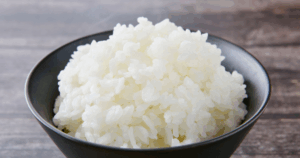Soy Sauce: Time, Patience, and Flavor

In Japanese cooking, soy sauce is not a flavor that demands attention — it’s one that reveals it. A single drop can soften sharpness, deepen sweetness, and bring ingredients together in a quiet harmony. Unlike seasonings that sit on top of a dish, soy sauce moves through it, connecting flavors the way water connects stones in a river.
Made from just four ingredients — soybeans, wheat, salt, and water — soy sauce begins simply and becomes complex through time. The beans are steamed, the wheat is roasted, the two are blended with a special starter called koji, and then the mixture rests in a tank or wooden barrel. Weeks pass. Months pass. In some traditional breweries, years pass. Inside the darkness, enzymes slowly transform proteins and starches into hundreds of flavor molecules: savory depth, caramel sweetness, floral notes, even a hint of fruit. What looks like a single taste is actually a world.
Modern mass-produced soy sauce is fast, filtered, and often artificially darkened, but traditionally brewed soy sauce is alive. It breathes, ferments, changes with the weather, and carries the quiet labor of people who never hurry the process. That is why a well-made soy sauce doesn’t simply make food salty — it makes it round, offering length, aroma, and depth.
There is also a story in the way soy sauce is named. In English, it is simply “soy sauce.” In Japanese, it is shoyu. But in sushi culture, it has another nickname: murasaki, meaning “purple.” Why purple? Because soy sauce was once considered a luxury item, as precious as the deep violet dye used in high-ranked clothing. Even today, some sushi chefs still say “Pass the murasaki,” preserving a tiny piece of Edo-period culture in a single word. The color isn’t just physical — it’s symbolic.
Soy sauce is also a seasoning that supports health when used thoughtfully. It is plant-based, naturally low in fat, and rich in amino acids created through fermentation. A little goes a long way, which is why traditional Japanese cooking seasons lightly, letting the ingredient speak while the sauce listens.
At CookinGlobe, we don’t just use soy sauce — we compare it, smell it, and taste the difference between quick-made and barrel-aged. Guests are often surprised at how one soy sauce can feel sharp while another feels soft, how one smells like cocoa while another leans toward dried flowers. And how just a drop on tofu or rice can change the entire mood of a dish.
Soy sauce isn’t loud. But it lasts — in flavor, memory, and in the way a simple seasoning can carry centuries of knowledge.
A single drop can change a dish — and once you notice it, you never forget it.
Discover Where Taste and Tradition Meet: The World of Soy Sauce
At CookinGlobe, you’ll taste three different soy sauces side by side — from everyday table shoyu to slow-fermented barrel-aged varieties — and learn how just one drop can shift a dish from simple to unforgettable.
If the depth of real shoyu stays with you, we’ll guide you to soy sauce breweries in Tokyo’s neighboring regions, including historic towns like Noda and Chōshi, where wooden barrels still breathe and the air smells like grain and time.
Begin with a tasting at CookinGlobe, then follow the flavor to where soy sauce is born.


